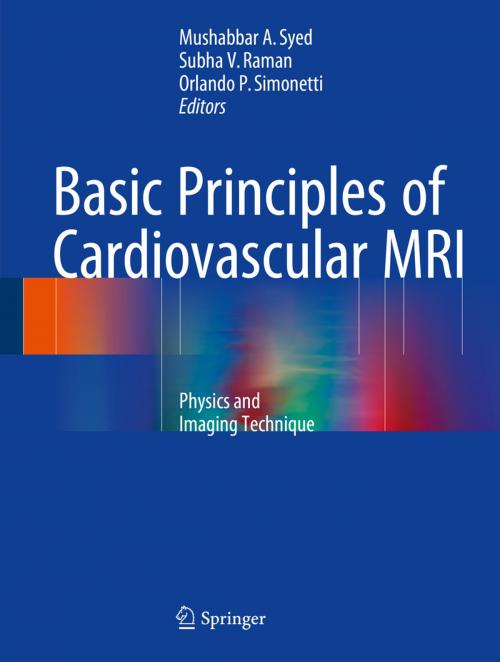Basic Principles of Cardiovascular MRI
Physics and Imaging Techniques
Nonfiction, Health & Well Being, Medical, Medical Science, Diagnostic Imaging, Specialties, Internal Medicine, Cardiology| Author: | ISBN: | 9783319221410 | |
| Publisher: | Springer International Publishing | Publication: | October 29, 2015 |
| Imprint: | Springer | Language: | English |
| Author: | |
| ISBN: | 9783319221410 |
| Publisher: | Springer International Publishing |
| Publication: | October 29, 2015 |
| Imprint: | Springer |
| Language: | English |
This book is a comprehensive and authoritative text on the expanding scope of CMR, dedicated to covering basic principles in detail focusing on the needs of cardiovascular imagers. The target audience for this book includes CMR specialists, trainees in CMR and cardiovascular medicine, cardiovascular physicists or clinical cardiovascular imagers. This book includes figures and CMR examples in the form of high-resolution still images and is divided in two sections: basic MRI physics, i.e. the nuts and bolts of MR imaging; and imaging techniques (pulse sequences) used in cardiovascular MR imaging. Each imaging technique is discussed in a separate chapter that includes the physics and clinical applications (with cardiovascular examples) of a particular technique. Evolving techniques or research based techniques are discussed as well. This section covers both cardiac and vascular imaging. Cardiovascular magnetic resonance (CMR) imaging is now considered a clinically important imaging modality for patients with a wide variety of cardiovascular diseases. Recent developments in scanner hardware, imaging sequences, and analysis software have led to 3-dimensional, high-resolution imaging of the cardiovascular system. These developments have also influenced a wide variety of cardiovascular imaging applications and it is now routinely used in clinical practice in CMR laboratories around the world. The non-invasiveness and lack of ionizing radiation exposure make CMR uniquely important for patients whose clinical condition requires serial imaging follow-up. This is particularly true for patients with congenital heart disease (CHD) with or without surgical corrections who require lifelong clinical and imaging follow-up.
This book is a comprehensive and authoritative text on the expanding scope of CMR, dedicated to covering basic principles in detail focusing on the needs of cardiovascular imagers. The target audience for this book includes CMR specialists, trainees in CMR and cardiovascular medicine, cardiovascular physicists or clinical cardiovascular imagers. This book includes figures and CMR examples in the form of high-resolution still images and is divided in two sections: basic MRI physics, i.e. the nuts and bolts of MR imaging; and imaging techniques (pulse sequences) used in cardiovascular MR imaging. Each imaging technique is discussed in a separate chapter that includes the physics and clinical applications (with cardiovascular examples) of a particular technique. Evolving techniques or research based techniques are discussed as well. This section covers both cardiac and vascular imaging. Cardiovascular magnetic resonance (CMR) imaging is now considered a clinically important imaging modality for patients with a wide variety of cardiovascular diseases. Recent developments in scanner hardware, imaging sequences, and analysis software have led to 3-dimensional, high-resolution imaging of the cardiovascular system. These developments have also influenced a wide variety of cardiovascular imaging applications and it is now routinely used in clinical practice in CMR laboratories around the world. The non-invasiveness and lack of ionizing radiation exposure make CMR uniquely important for patients whose clinical condition requires serial imaging follow-up. This is particularly true for patients with congenital heart disease (CHD) with or without surgical corrections who require lifelong clinical and imaging follow-up.















